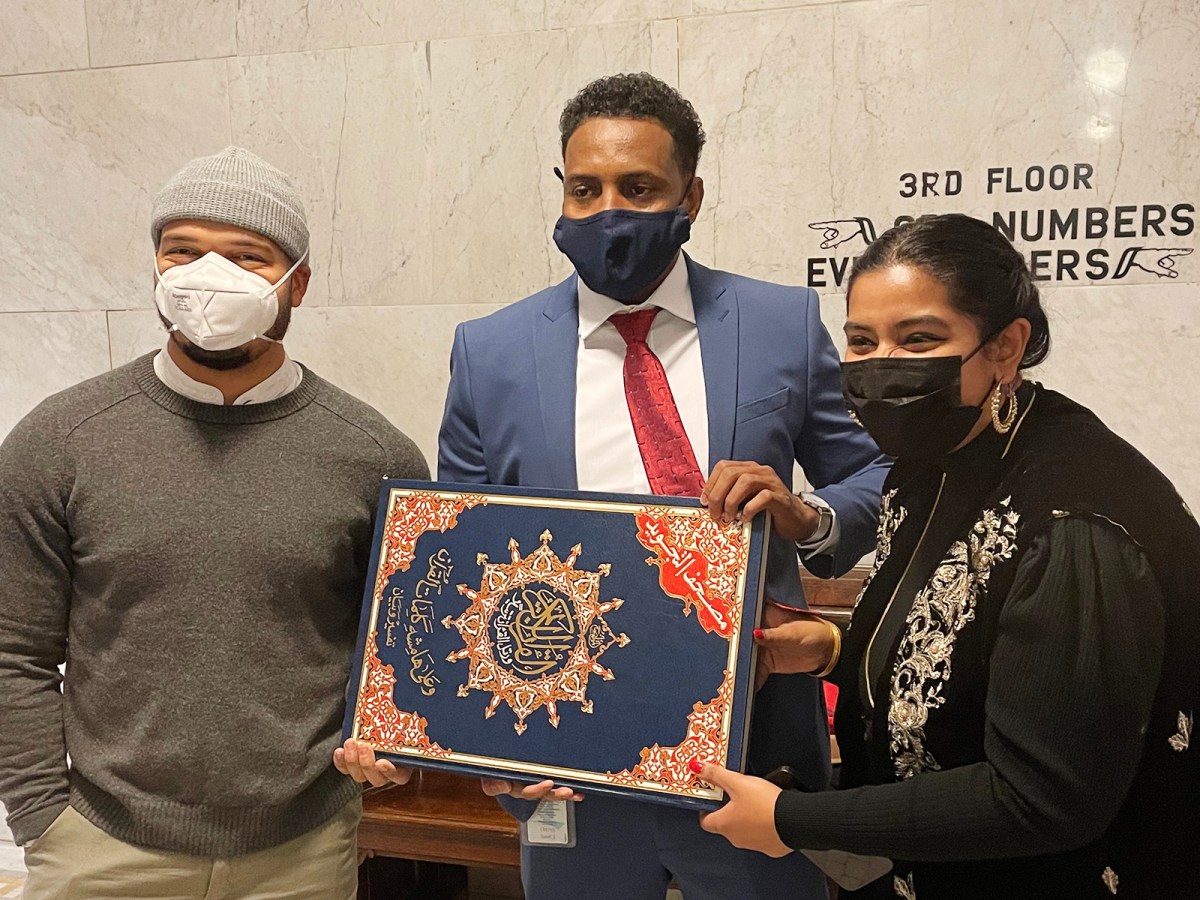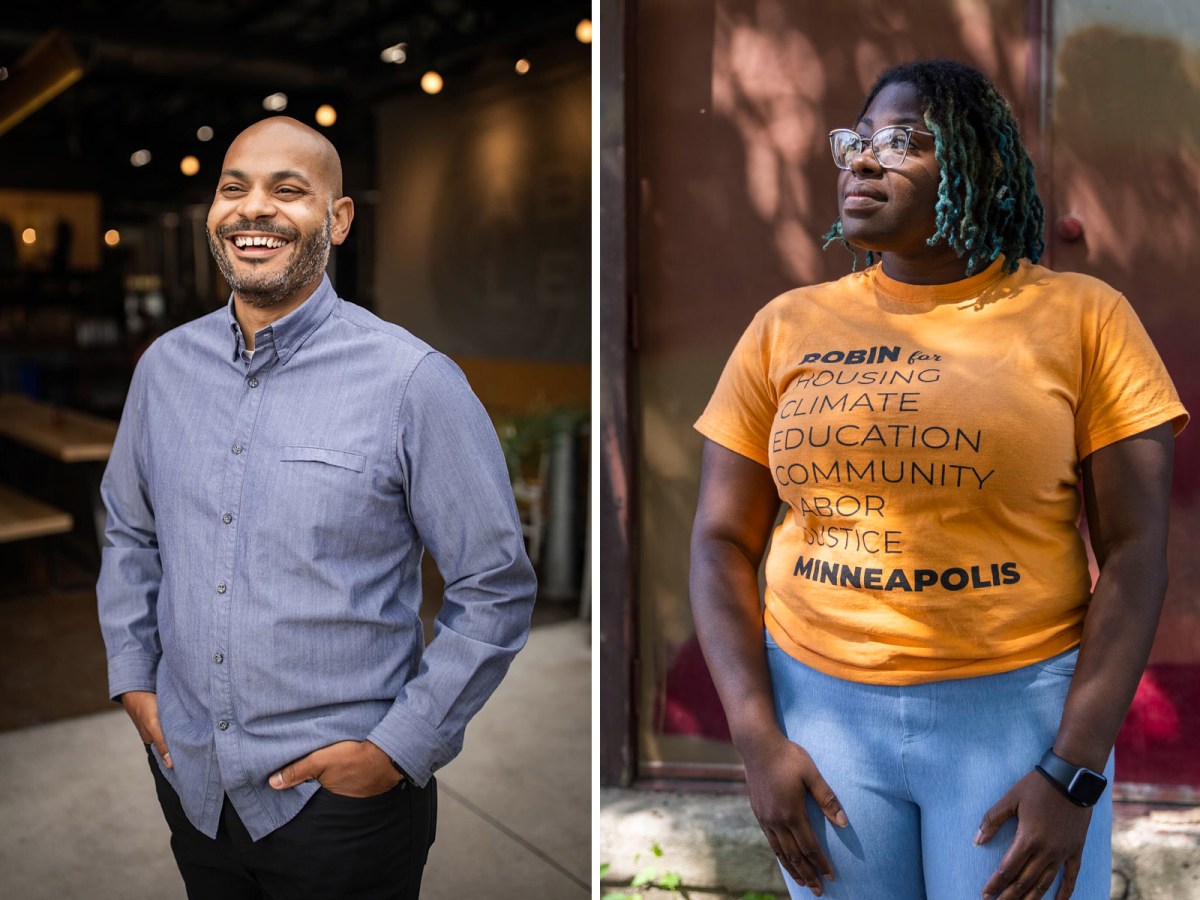Moderates won an important procedural vote Monday during the first meeting of the most diverse city council in Minneapolis history.
Shortly after 13 members—seven of them new—were inaugurated Monday morning, the council unanimously elected Andrea Jenkins its president. But council members were divided on picking the vice president, which ultimately went to Linea Palmisano on a 8-5 vote.
The moderate Palmisano, who is just beginning her third term in office, beat progressive newcomer Elliott Payne. Palmisano, who is white and represents southwest Minneapolis, won the votes of half of the City Council’s six Black members. Payne is Black and represents northeast Minneapolis.
Two subsequent votes on establishing the makeup of standing and special City Council committees and meeting schedules broke down on similar divided lines, pointing to the emergence of a five-member progressive coalition and a majority moderate coalition, at least on some issues.
The council is for the first time made up of a majority of people of color. During comments made shortly after becoming council president, Jenkins spoke about how the body was diverse in more ways than its racial makeup.
“We represent age diversity, gender balance. In fact, there is a majority of women on this council.” she said. “But that, my friends, is not even the most important diversity, because we represent a diversity of thought, of ideas and solutions to the most pressing issues of our time.”
Jenkins made history in 2017 as the first Black transgender woman elected to public office in the country. She is seen as progressive on many issues. For example, she supported last year’s failed public safety overhaul ballot measure that would have replaced the Minneapolis Police Department with a new department of public safety. But Jenkins is also moderate on several key issues, including votes to increase police funding and her support to open vehicle traffic on George Floyd Square, which is located in the ward that she represents.
Jenkins was also one of three Black council members to support Palmisano for the vice president position, joined by Jamal Osman and LaTrisha Vetaw.
Council members Robin Wonsley Worblah, Aisha Chughtai, Jason Chavez and Jeremiah Ellison joined Payne in voting to make the council member from northeast Minneapolis vice president. All five are people of color. During the vote for the body’s vice president, several of Payne’s supporters argued that putting him in a leadership position alongside Jenkins would send a strong message to the community.
“We have an overwhelming majority now of people of color on our city council,” Chughtai said, “and I think it would be incredibly historic to see that represented in our council’s leadership.”
Chavez added: “It matters to me that the people that represent me look like me, and now the people that I represent can see themselves in the City Council and in our leadership.”
Vetaw and Jenkins, however, both said Palmisano’s experience would serve her well in the leadership role. Vetaw said she’s known Palmisano for close to a decade from her own time serving as a Minneapolis Park and Recreation Board commissioner.
“After I won the election, Councilmember Palmisano was the first person to come to me and say, ‘Hey, what are you interested in? What do the people in Ward 4 want? What are you hearing at the doors?’” Vetaw said.
In many ways, the vote for vice president was symbolic of the new city council’s ideological shift. But all things considered, Council member Andrew Johnson argued that the council is still very liberal. “This is one of the left-most bodies in the nation in terms of municipal government,” Johnson said.
Indeed, all current city council members are either members of the Democratic Farmer-Labor Party or Democratic Socialists of America. But the current City Council overall will likely be more moderate than the most recent council. Last fall, three moderate challengers, including Vetaw, defeated three incumbent progressive council members. One progressive challenger—Payne—beat an incumbent moderate council member.
As president, Jenkins will preside over City Council meetings and make all appointments to the council committees. In reality, committee membership gets decided in horse trading negotiations behind the scenes, said former Minneapolis City Council member Paul Ostrow.
The council vice president presides over council meetings when the president is absent. The vice president also chairs the Committee of the Whole, where council members debate legislation before it goes to public hearing.
The current City Council will have to retool itself after losing administrative powers as part of city voters’ approval last fall of a so-called strong mayor system.
One thing the council president and vice president will no longer do is serve on the city’s Executive Committee with the mayor. The Executive Committee used to play a role in choosing city department heads, but it no longer exists under the strong mayor system.
City departments will now also report only to the mayor, and not to City Council committees as a part of that change.
Speaking to Sahan Journal shortly before the vote, Payne said he was running for vice president because he believes many of the structural issues that emerged in the public eye in 2020 aren’t close to being resolved.
“We’re still in the wake of George Floyd’s murder, and we haven’t addressed the root cause of the problem,” Payne said.
Palmisano did not return a phone call from Sahan Journal before press time. After being elected council vice president, she spoke against “the rock-hard coalitions that form and then persist on the City Council.”
“It is what is wrong with today’s politics,” Palmisano said.






